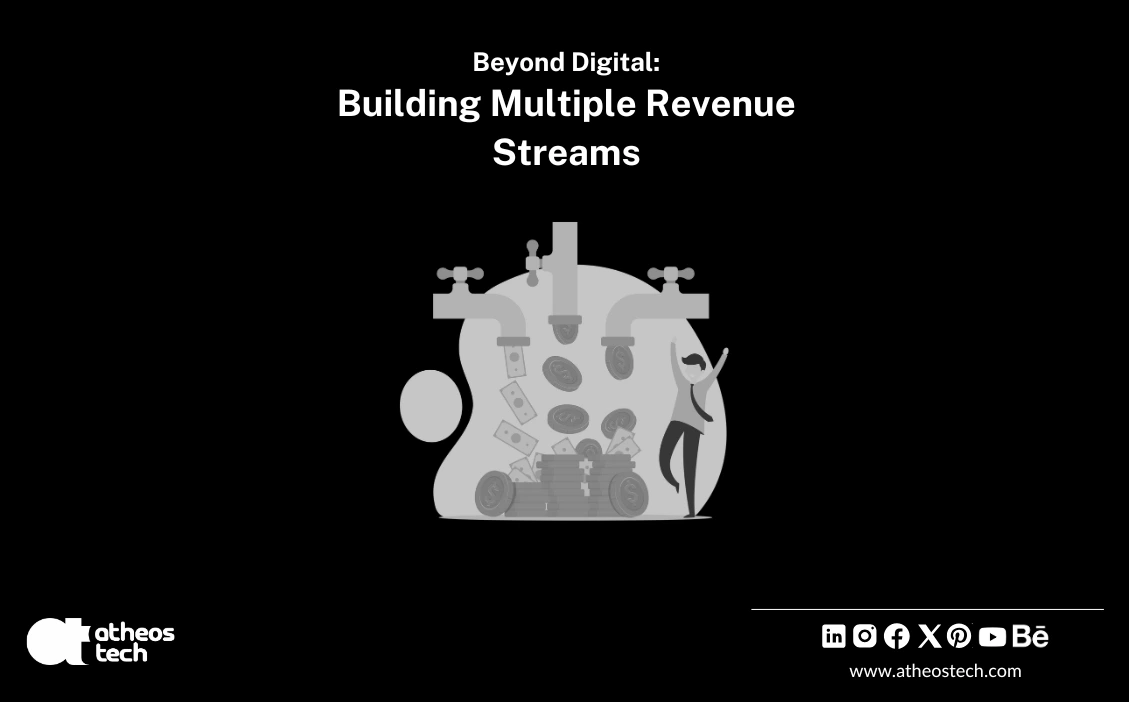
Hire UI UX Designer to Transform Your Brand Across Every Digital Channel

Congratulations! You’ve crossed the toughest hurdle in business: survival. You’re already operating partially or fully in the digital space, a massive win. But in a landscape where the smartest, not just the strongest, survive, standing still is falling behind.
So here’s the question: what’s next?
At this stage, many business owners start to feel a sense of accomplishment, and you should. But don’t confuse digital presence with digital maturity. Going digital was never the final goal; it’s just the new baseline. Now is the time to evolve beyond just being “online.”
It’s time to tap into digital revenue streams that multiply your growth, reduce dependency on a single offering, and scale your profitability without scaling your workload.
This is exactly where Small business it solutions step in to provide tailored guidance. Whether you’re offering services, selling products, or building a community, firms like AtheosTech help convert your current traction into sustainable, diversified success. With the right strategy, you can move from just surviving to systematically scaling.
If you’ve already invested in digitization, the good news is you’re perfectly positioned to take the next leap. The infrastructure, audience, and insights you’ve built are fertile ground for creating new revenue streams. With expert direction from a trusted small business consulting company, you can turn dormant opportunities into steady income.
Great! That’s a solid first move. Maybe you launched an eCommerce site, built a subscription model, or added a digital product. That counts. But don’t mistake having a digital channel for having a digital strategy.
Checking the “digital” box doesn’t make you future-ready. It can create a dangerous illusion of security. Meanwhile, your competitors are working with small business consulting companies like AtheosTech to build smart, interconnected digital revenue streams. They’re growing more resilient, profitable, and future-proof by the day.
Let’s face it: Business is about profit. And there are two ways to increase profit:
Both are easier when you stop relying on ONLY ONE REVENUE STREAM.
Here’s something most small businesses overlook:
The most dangerous number in business isn’t zero, it’s one.
One major product. One income stream. One service line. One key client. One platform for sales. You’re one event away from a collapse. A slow month can feel like a financial emergency. A new competitor can disrupt your entire model.
And that stress? It becomes a constant.
But the most resilient businesses are designed differently. They don’t rely on a single pillar; they build bridges, floors, backup systems.
They build multiple income streams, turning their company into a smart, agile ecosystem. This doesn’t just protect the bottom line; it increases your business’s overall value, trust factor, and longevity.
Meet Tom, a fitness coach in Texas. His business was fully digital during COVID, offering Zoom-based training to individual clients. But she hit a ceiling: more clients = more hours.
Through a partnership with a Small business it solutions from AtheosTech, she added:
These Business & Revenue Model Ideas turned him into a brand. Not only did he increase his revenue, but he also freed up time, hired help, and stopped hustling 10 hours a day. That’s scaling smart.
Explore how tailored small business IT solutions can future-proof your business.
A well-designed revenue model is at the core of every successful digital business. But it’s not just about monetization, it’s about choosing models that fit your audience, your operations, and your long-term goals. Below are three categories of revenue models you can explore depending on your business stage and product maturity.

These are foundational models that power most digital businesses today.
Offer access to exclusive content or ongoing services for a recurring monthly or annual fee. Think Netflix for entertainment or a monthly design assets library for creators.
Provide a basic version of your service for free while charging for premium features. Ideal for SaaS companies, Slack and Dropbox grew fast using this model.
Sell downloadable content such as eBooks, templates, video courses, or software. Low overhead and scalable with high profit margins.
Earn revenue by displaying ads on your website, app, or content. Google AdSense is a classic example, but also think of YouTube creators monetizing through ad placements.
Promote third-party products and earn commission for each sale. Amazon Associates is a great example, and this is perfect for content creators and bloggers.
Generate and sell leads to businesses in need of targeted prospects. Think real estate platforms or B2B marketplaces that collect and sell intent-driven data.
Customers pay only for what they use. Ideal for cloud storage or telecommunication services.
Take a percentage of every transaction processed through your platform. Examples include Etsy or Uber.
Charge a fee for delivering a product or service. Food delivery apps like Swiggy or Zomato apply this effectively.
Charge users a convenience fee for reserving or booking a service. Event platforms or travel aggregators use this.
Charge businesses to list their services or products on your platform, like a premium profile on a marketplace.
Charge a service fee for handling the payment infrastructure. PayPal and Razorpay follow this model.
Add a cancellation clause to protect resources and ensure commitment. Common in hospitality and travel services.
These models combine elements from core models for smarter monetization.
Start free, but let users upgrade for more features. Canva uses this successfully for basics, and paid for pro tools.
Charge a base rate, but also bill for usage beyond a certain limit. AWS and Twilio operate this way.
Sell usage rights for your intellectual property. Often used in software and creative industries (music, photography).
Provide access to your backend systems or algorithms via API. This is widely adopted in fintech and data analytics.
Offer your software to be rebranded and resold by other businesses. Think SaaS tools for CRM or booking systems.
Innovative and fast-evolving models are perfect for digital-native brands.
Raise funds through platforms like Kickstarter or Patreon. Great for creators, inventors, and artists building a following.
Sell anonymized customer behavior data or insights to third parties. Common in big data and analytics industries.
Used in gaming and mobile apps to sell avatars, coins, or unlock features.
If you’ve built a valuable AI model or decision engine, license it for a fee to other companies.
Let users pay for bite-sized services or premium upgrades. Ideal for productivity tools or editing platforms.
You don’t need all these models. You need the right two or three, built around your current audience, team, and tech stack. Ask:
That’s where Small business it solutions like AtheosTech come in. We help you explore what fits, test lean, and scale fast.
Scaling isn’t just about new offers, it’s about seamless delivery.
Because we don’t do guesswork. We engineer small business IT solutions that:
From idea to execution, AtheosTech is your small business consulting company with an execution-first mindset. We’re not just consultants; we’re your CTO, strategist, and growth partner.
Ready to diversify your revenue?
Let’s build your growth strategy today with AtheosTech
You’ve already leaped into the digital world. That makes you smarter than most. But if your business still depends on ONLY ONE REVENUE STREAM, it’s time to act.
The future belongs to businesses that are agile, diversified, and tech-enabled. Digital revenue streams are not just extra cash; they’re the safety net, growth engine, and innovation pipeline your business needs.
Whether you’re a service-based startup, a product brand, or a hybrid business, AtheosTech, your trusted small business consulting firm, can help you map, build, and scale smart income channels that align with your long-term vision.
The market moves fast. Your competitors aren’t waiting. Neither should you.
Adding {{itemName}} to cart
Added {{itemName}} to cart